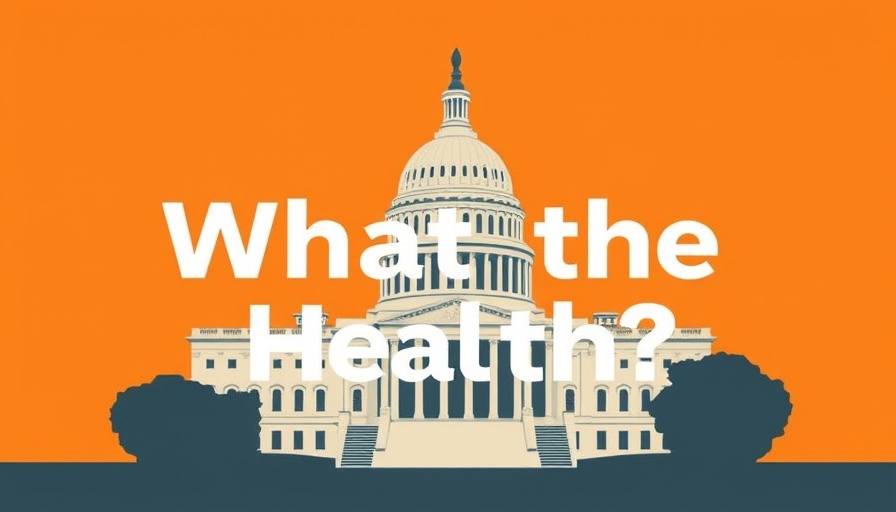
Understanding the Disarray in America’s Health Care System
The recent discussion at the Aspen Ideas: Health Forum featuring former governors and a former Secretary of Health and Human Services shed light on the complexities of the United States healthcare system. It's evident that while there is no single authority that governs the healthcare landscape, years of fragmentation have led to inefficiencies and hardships that patients and providers alike face. This disorganization not only complicates governance but also creates gaps in services provided to numerous Americans.
State vs. Federal Responsibilities Explained
The conversation moderated by KFF Health News featured insights from Kathleen Sebelius, Chris Sununu, and Roy Cooper, emphasizing the shared responsibilities between state and federal government in health care delivery. For instance, the states heavily depend on federal support in managing programs like Medicaid. Importantly, the success of healthcare initiatives often relies on collaboration between levels of government. With federal Medicaid funds being pivotal, cuts or alterations to these programs directly impact state budgets and the level of healthcare services they can offer.
Economic Implications of Medicaid Cuts
During the discussion, the governors highlighted how proposed cuts in Medicaid under policies like the “One Big Beautiful Bill Act” could leave states grappling with budget deficits. Medicaid accounts for a significant portion of state expenditures, and without timely federal support, states could look at making tough choices between funding healthcare and other essential services. This reality acknowledges the broader implications that budget cuts can have on the health of American citizens.
The Workforce Crisis: Barriers to Effective Healthcare
From burnout rates heightened by the pandemic to the pressure of student debt, challenges exist in maintaining a robust healthcare workforce. The governors discussed how these factors have led to a decline in professionals entering primary and rural health care. The federal government can implement initiatives targeting student loan forgiveness for those entering these fields, which would both incentivize new talent and alleviate pressures on an overburdened workforce.
Future of Healthcare Funding and Policy Insights
Dramatic changes in healthcare funding over the last decade raise crucial questions about the future of the nation’s health financing. The rising cost of care and the shifting demographics of the population signal an inevitable need for innovative solutions. Policymakers must ensure that programs like Medicare, which is projected to face insolvency challenges ahead, can adapt to demographic demands while avoiding fiscal shortfalls.
Deciphering Healthcare Costs: How Can We Contribute?
The governors urged that a collective effort is needed to confront and understand the ever-rising costs of healthcare. Businesses, particularly in tech and marketing, can play a crucial role by advocating for efficient practices in their sectors and investing in solutions geared toward health-related advances. Collaboration between industries and government could lead to groundbreaking innovations that preserve quality care at manageable costs.
Future Predictions: Where is the Health Tech Market Headed?
As tech continues to converge with healthcare, industry leaders might find that investing in health tech innovations can serve dual purposes—expanding profits and improving patient access to essential healthcare services. As such, professionals should stay informed of emerging technologies that offer efficient solutions to chaotic healthcare situations. Those who engage directly with these streams of innovation may become pioneers in redefining healthcare delivery.
Common Misconceptions About Health Coverage
Many Americans harbor misunderstandings about their health insurance and what benefits it encompasses. Misconceptions about Medicaid's role, mental health care access, and preventive services hinder citizens from utilizing the full range of available support. Educating patients about their coverage options is a necessary step to ensure they can access healthcare without incurring excessive out-of-pocket costs.
In conclusion, the ongoing struggle to create an effective healthcare system in the U.S. requires cooperative efforts from federal and state governments, as well as from private sectors. The insights shared by the panelists not only underscore the obstacles we face but also remind us of the potential paths we can take to improve outcomes for all Americans.
As stakeholders in the business community, CEOs and marketing professionals should align their strategies to foster health innovations and advocate for accessible healthcare solutions that benefit not only their employees but also the broader community. Health is a shared responsibility, and investing in knowledge about it is a step toward meaningful change.
 Add Row
Add Row  Add
Add 




Write A Comment